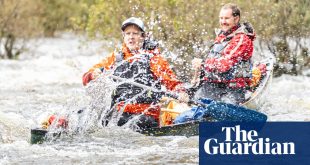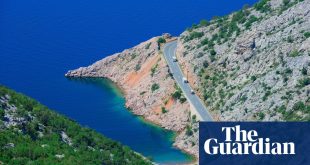When I was a teenager, I watched a TV documentary about a frozen human body that had been discovered at the summit of Mount Ampato in Peru. Dubbed “Juanita” or the Incan ice mummy, this girl had been a human sacrifice, killed in about 1450 at the age of 14 or so – the same age I was. Her body had mummified, preserved in the permafrost, which meant her clothes, her hair, even her stomach, containing her last meal, were all still intact.
Using a battery of scientific techniques, as well as historical and anthropological knowledge, the anthropologist-archaeologist-mountaineers who discovered Juanita were able to unpick the story of her final months, weeks and hours. I was astounded to learn that discovering and explaining such mysteries could be an actual job. Anthropology and archaeology, and the challenge of making the strange familiar, and the familiar strange, had a hold on me.
To prepare for university interviews, I found an archaeological dig in Cheshire that was willing to let me and my friend Helen camp for the week and help out. There was a Portaloo, a lumpy field for camping and a “mess tent” with chairs, tables and a limitless supply of hot tea served in brown-stained mugs. The professional archaeologists were the coolest people I’d ever met. They looked more hobo than emeritus professor, but it was clear they were intellectual and scientific heavyweights, piecing together the story of a complex site that spanned thousands of years of human activity.
I helped excavate the foundations of a medieval chapel, and the skeletons that had been buried around it. To my untrained eye, there were no obvious traces above ground – it was just a grassy field. But it had always been known as Chapel Field, and generations of farmers had avoided ploughing the area for fear of throwing up large blocks of stone.
To the archaeologists, who could read the landscape in a way I couldn’t, its history was glaringly apparent. I helped excavate a tall, middle-aged male skeleton. The bones were robust, and he had probably been part of the local farming community who used the chapel in the 1300s. He’d broken one of his fingers at some point and it had healed crooked. It seemed such an intimate and personal detail of someone’s life from many centuries ago. It was a reminder that this wasn’t just a skeleton, but a person.
Archaeology is the study of the human past through material remains – from buildings, tools and craftwork to burial sites and human bodies. Often the things archaeologists discover are items that were thrown away or lost or buried. This “rubbish” tells the story of ancient lives.
Archaeologists can even study the preserved plaque on ancient teeth and the poo at the bottom of privies to see what people ate. Gross, but also super-cool. The real value of these myriad material remains is in how they connect to each other – where the flakes of a flint tool are situated in relation to a fireplace, how a shrine is aligned with the sunrise, or how a site has been reused and reshaped by successive generations. From single data points, archaeologists build a web of understanding.
Television shows such as Digging for Britain and Time Team capture the wonder of discovering that past, the precision of archaeological techniques, and several big, tricky questions. Why do humans – through time and across cultures – do so many weird and amazing things? How did people in the past tackle the challenges of life we still grapple with today – whether that’s how to build a rainproof roof, grow food, carry babies comfortably, choose a leader, make sense of death or keep their loved ones safe? That head-scratching curiosity is what drives my work, making TV and radio programmes and writing books about the past.
Community archaeology projects are often looking for volunteers. Good digs will welcome people with physical disabilities and additional support requirements, and ensure they are given tasks and training that are comfortable, meaningful and meet their needs.
Projects need people to clean and process finds, keep digital and written records, use tech to gather and interpret data – from photographing finds and processing lidar (laser) scans to photogrammetry, which uses millions of still photographs to build a 3D model of a site or find. They need people who like talking to visitors, have a knack for presentation and creative interpretation. They also need people who don’t want to go on site at all, but can work from home, looking at documents and maps, completing archival research and exploring other avenues of research. Then there’s the support needed for keeping websites and social media accounts busy and up to date, wrangling funding, writing press releases and all the other back-office work that keeps the trowels turning.
A few years ago, I volunteered at Chester Farm, near Wellingborough in Northamptonshire. It’s a brilliant site, close to a prehistoric (and later Roman) river crossing. There’s evidence of more than 10,000 years of human activity along the riverbank and in the surrounding fields; this one site tells the story of the county.
On the day I helped out, I was lucky enough to be assigned to excavate part of a perimeter ditch. The archaeologists knew it was Roman, but they weren’t sure how deep or wide it was, or whether there was anything interesting caught up in the ancient silt and detritus that now filled the ditch. I scraped away, looking out for differences in colour and texture that would denote a change in the shape of the ditch. There were stones, lumps of clay, and then there it was – the smooth, curved head of a long, thin, ivory-white pin.
It was an intact Roman hairpin made of cow bone. I was the first person to hold it for 1,800 years – the last person to have their hands on it was probably the one who dropped it.
Archaeology can also be therapeutic. For a BBC radio podcast, I spent the day with Breaking Ground Heritage, which uses archaeology as a recovery pathway for serving and former military personnel. They conduct cutting-edge archaeological research and provide therapeutic support at the same time. Archaeological fieldwork can, it turns out, be quite like being on military campaign. You keep going in all weathers, you have to combine physical skill with mental agility, and you pay close attention to tiny details while holding the big picture in mind. And the camaraderie is second to none – if PTSD demons come at night and sleeping isn’t easy, be assured that there will be someone else in the mess tent going through it too. Mastery of a new skill brings confidence, control, pride and resilience.
Some of my most magical archaeological encounters have actually been with whole landscapes, rather than specific artefacts. I once sat in a cave shelter in Torridon in the north-west Highlands eating my sandwiches, knowing that hunter-gatherer people from the Mesolithic era had sat in the same place eating roasted hazelnuts and shellfish, 7,000 years earlier. I’d found the place by searching the Canmore database of Scottish archaeological sites to see if there were any nearby.
after newsletter promotion
Dartmoor’s bronze age stone rows, monoliths (standing stones) and hut circles are fabulous. You can still walk through an ancient doorway into the remains of a family home from 4,000 years ago. On Ilkley Moor, you can explore the mysterious rock art carved into earthfast boulders (a GPS trail leads to the finest examples).
Further north are Kilmartin Glen, with cairns, standing stones and rock carvings (Kilmartin Museum is brilliant) and Dunadd, where you can put your foot in a carved footstep shape that was used as part of the inauguration ceremonies of Gaelic and Pictish kings. Callanish (also Calanais), in Lewis, South Ronaldsay and Mainland in Orkney are landscapes chock-full of the traces of ancient people. It’s amazing to explore the landscapes they knew, and wonder at the alignments, the meaning, the effort it all represents. We can’t be sure of all the answers but the questions are compelling.
On a Time Team dig, I was perched next to Phil Harding as he trowelled back a layer of sandy soil. The cameras were elsewhere but I was happy to watch him and learn something. “Oh ho,” he muttered. I couldn’t see a thing – what had he spotted? He revealed that he couldn’t see anything either, yet. But he had felt a change in the texture of the soil through his trowel, so he knew he was getting on to a feature. Sure enough, he’d reached the edge of a wall we’d been looking for.
It seems like magic, but it’s actually years of expertise, perfectly honed in a discipline that is equal parts art and science. And a whole trenchful of satisfyingly mysterious “whys”.
Mary-Ann Ochota’s books, Secret Britain: Unearthing Our Mysterious Past, and Hidden Histories: A Spotter’s Guide to the British Landscape, are available at guardianbookshop.com
Get involved
The Council for British Archaeology (CBA) lists fieldwork opportunities every year. It runs Young Archaeologists’ Clubs around the country as well as the annual nationwide Festival of Archaeology, with special events, activities and access to sites around the country. This year’s festival runs 13-28 July 2024. The CBA also trains volunteers to become Listed Buildings Casework volunteers.
Each of the home nations has an online catalogue of heritage and archaeological sites:
England: Heritage Gateway
Wales: Coflein
Scotland: Canmore
Northern Ireland: HERoNI
The Portable Antiquities Scheme has a database of more than 1.7m find made in England and Wales, mostly by metal detectorists. You can see what items have been found in your county, read guides to help identify particular types of artefacts or coins, and get advice on how to metal detect responsibly, and what to do if you find something.
Explore old maps side-by-side with modern mapping and satellite imagery at the National Library of Scotland site maps.nls.uk/.
Many counties are undertaking church graffiti surveys – such as the Norfolk Medieval Graffiti Survey.
 Top Naija News: Nigerian News, Breaking News Nigeria and World News Top Naija News is a daily news publication in Nigeria, delivering the latest breaking news in Nigeria and around the world.
Top Naija News: Nigerian News, Breaking News Nigeria and World News Top Naija News is a daily news publication in Nigeria, delivering the latest breaking news in Nigeria and around the world.



